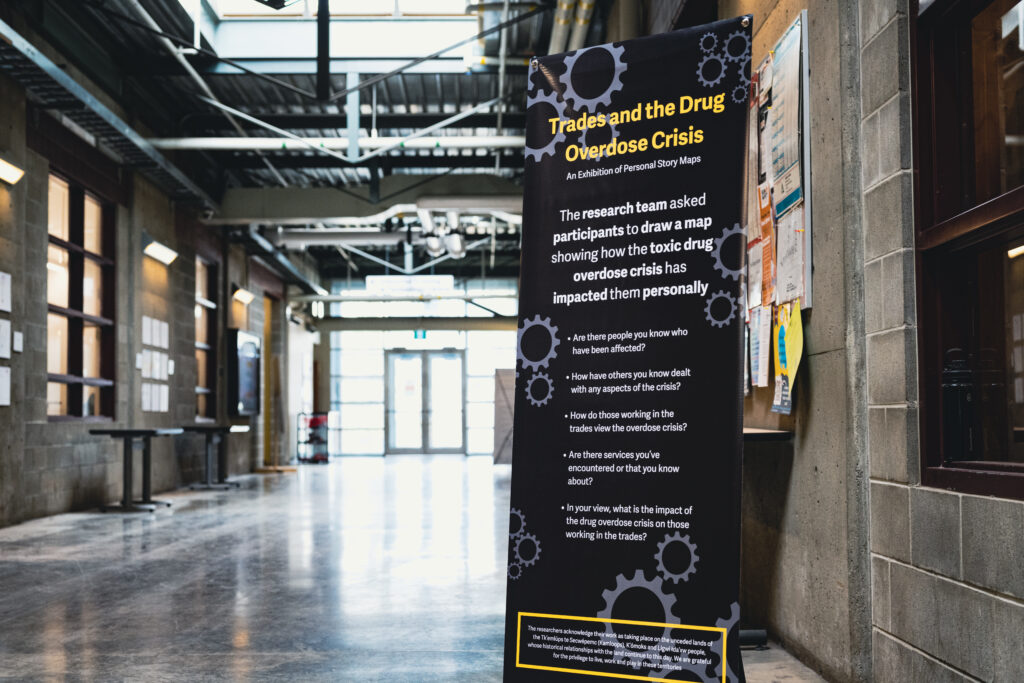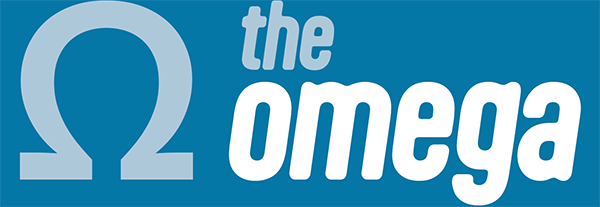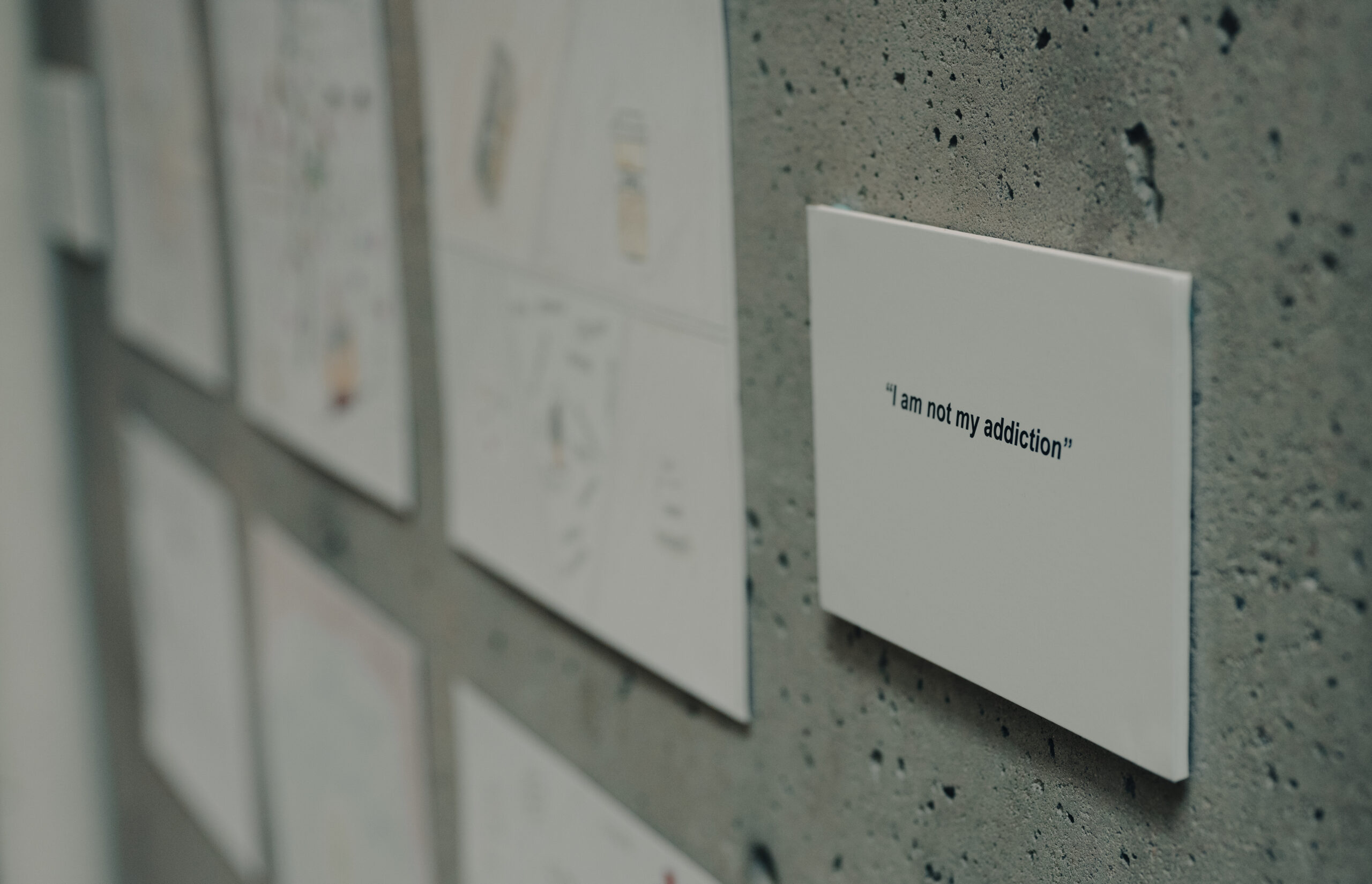From March 12-14, members of a TRU research team featured an art exhibit in the halls of the Trades and Technology Building. The exhibit was part of a research project conducted by Principal Investigator Will Garrett-Petts, Co-Investigator Sharon Karsten and a university research team about the toxic drug overdose crisis in the trades job industry.
The research team had members of the local community create an art “map” that showed how the toxic drug overdose has impacted them, particularly within the skilled trades community. The team wanted to use these drawn maps to better understand the crisis through the eyes of community members who have been personally affected. The research was conducted to understand the general effects of the toxic drug overdose crisis, but throughout their research, the team found that there is a strong need for new solutions to the crisis. The cultural art maps were displayed to share the project’s findings with the community.
Principal Investigator Will Garrett-Petts told the Omega what he had found throughout his research and what his goals were going forward.
Garrett-Petts said that he and his team have found that many people have “an interest in the resources that are available.” Additionally, he said, a significant portion of interviewees for the research project reported that many of the currently available resources aren’t practical or helpful to their experiences and situations. The challenge for his team, Garrett-Petts explained, is to “create something that responds more authentically to the kind of narratives that the individuals are presenting to us.” The team believes that the system of resources needs to be reworked into a more personal system that helps people work through their struggles.
Garrett-Petts has found that many previous solutions and resources for the toxic drug overdose crisis don’t work for many people or don’t align with people’s real lived experiences. His research has outlined new ways of approaching the subject and ways of learning with the community.
“We’ve also heard loud and clear that working in certain locations creates real stress, especially for apprentices and young people entering the trades community,” Garrett-Petts said. “Going up North, being isolated, not having personal resources to draw upon and not necessarily having strong family relationships, all of those things play in, and when you look at those maps that are on the wall, they kind of accumulate, and you can see the patterns developing. Those are the kinds of things we’re trying to draw out.”

Through the experiences outlined on the maps, Garrett-Petts was able to see some of the potential causes of drug intoxication in the trades community and some of the struggles people face within the job industry.
“The biggest thing we found [with this project] was that some people don’t even know that drug overdose or Opioids is an issue in trades. More so, we found that people don’t know the resources that are available,” Research Team Member and Electrical Instructor Jason Schapansky said.
Schapansky said he’d like this data shared with future trades classes, adding that future trades students should be aware of the risks just as they should be aware of the risks of physical injury in the workplace.
An important aspect of the exhibit was its placement in the second-floor hallway of the trades building. The research team wanted it in an unconventional but high-traffic area.
“What brought it to the trades hallway and the fact that we’re doing it somewhere that’s high-traffic is that we wanted people to see it. We don’t want to make it a destination. [This way] it’s on the path to wherever you’re going,” Schapansky said.
Members of the research team emphasized that the topics or data should not be “preached” but should be accessible to those who want to learn more.
Research Team Member Kate Fagervik explained the meaning and significance of the art maps.
“In research, we have many different methods. Most people know surveys or focus groups. Here we’re using cultural mapping, a qualitative research method which means it’s using stories and narratives as opposed to numbers and traditional data,” Fagervik said. “Cultural mapping has a ‘draw-talk protocol,’ so it’s an arts-based research method. My role on the team is… helping in the mapping [and hosting] sessions to explain how to use the [art] supplies.”
Utilizing this method, members of the community are asked to draw art maps, which they later walk through with researchers, explaining what they drew and why.
“The follow-up is important… we get together one on one with the people who have drawn the maps and say, ‘take us on a tour of the map and explain it.’ That process is so different than if you walked up to me and did an interview. I’ve processed things differently by drawing it out, it actually draws on a different part of the brain,” Garrett-Petts explained.
Fagervik said that the art exhibit “came sort of organically” and that the exhibit was a way of “sharing them back to the community.”
For anyone seeking information on substance use and addiction or to reach out for counselling, help is available from Interior Health by clicking here or from the TRU Wellness Centre by clicking here. You are not alone.

